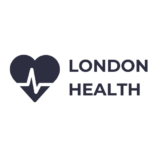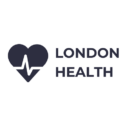Carbon monoxide is a very dangerous gas, which is produced when fuels are not burnt properly; the gas is released when fuel is not completely burnt. Each year, 50 people die and over 200 are injured because they are exposed to carbon monoxide. Carbon monoxide is commonly known as a silent killer because it has no smell or taste and it cannot be seen.
What happens when carbon monoxide is breathed in?
When carbon monoxide enters the bloodstream, it mixes in with the haemoglobin cells; once this happens the blood is no longer capable of delivering oxygen around the body; this can lead to a loss of consciousness and even death.
What are the symptoms of carbon monoxide poisoning?
Common symptoms of carbon monoxide poisoning include:
- Dizziness
- Nausea
- Headaches
- Vomiting
- Abdominal pain
- Tiredness
Doctors often say that the symptoms of carbon monoxide poisoning are similar to those associated with food poisoning and flu; however, unlike flu, carbon monoxide poisoning will not cause fever. If you have any of the symptoms listed above you should consult your GP.
Preventing carbon monoxide poisoning
Carbon monoxide may be produced by a number of different appliances including wood, gas and coal fires, air conditioning units, cookers, boilers and central heating systems; it is extremely important to get the appliances in your tested on a regular basis. Try to keep chimneys clear and keep the house well ventilated; open doors or windows if you are burning something as this will allow the gas to escape.
Treating carbon monoxide poisoning
First aid treatment
If you think you have breathed in carbon monoxide gas, move away from the source of gas and seek medical help immediately. If you come across somebody with the symptoms listed above or a casualty that has lost consciousness, ring 999 and check the casualty’s airways, breathing and circulation. If they are breathing, place them in the recovery position and stay with them until the paramedics arrive. If they have stopped breathing, you should prepare to give them CPR. Try to move the casualty away from the suspected source of carbon monoxide gas as quickly as possible.
Most patients with moderate or severe cases of carbon monoxide poisoning are treated in hospital with pure oxygen; the patient will be fitted with an oxygen mask which will enable pure oxygen to filter through into the bloodstream. If the patient has breathed in a large amount of gas they may have sustained nerve damage; if this is the case, they may be treated with hyperbaric oxygen therapy (HBOT); this treatment helps to reverse the effects of the carbon monoxide by filling the body with pure oxygen.

